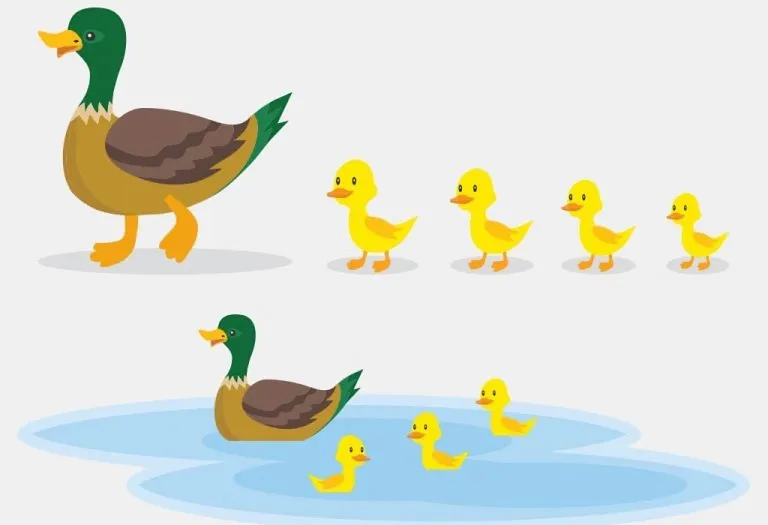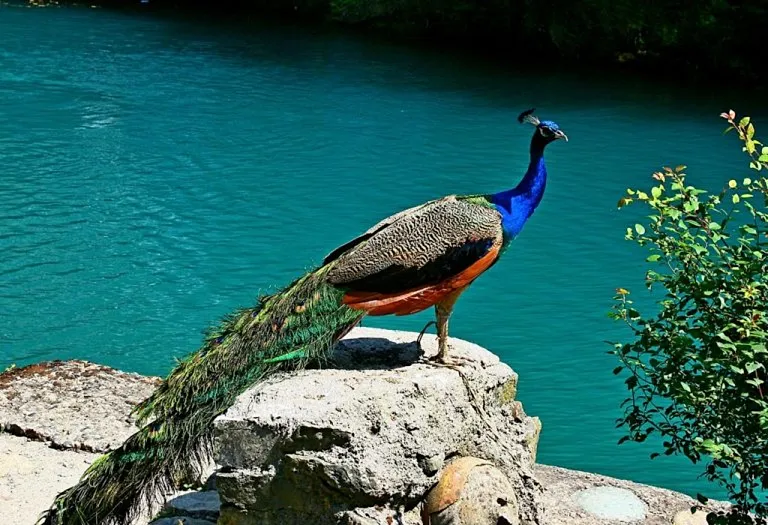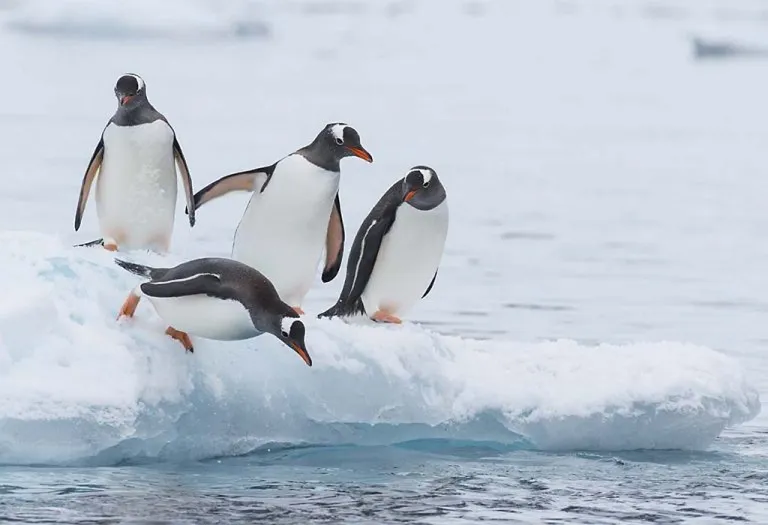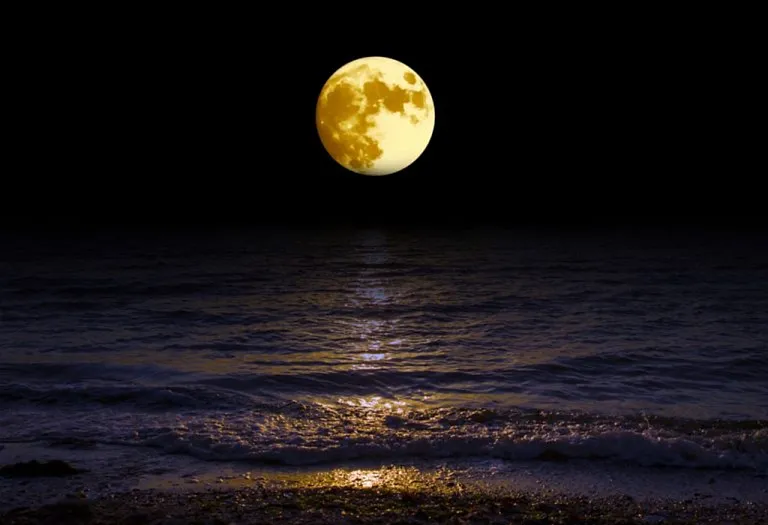Amazing Facts About Ducks for Kids
- Different Types of Ducks
- Where Do Ducks Live?
- Food Habits of Ducks
- Lifespan of Ducks
- Do Ducks Recognize Human Faces?
- Do Ducks Have a Cosmopolitan Distribution?
- Ducks and Their Varied Feeding Methods
- Do Ducks Have Many Predators?
- How Do Ducks Reproduce?
- Other Amazing Duck Facts for Kids
- FAQs
Ducks are interesting birds; they can fly in the air, waddle on land, and swim in water; there aren’t many animals that can do all that. Closely related to geese and swans, these birds are smaller with shorter necks. In popular culture, ducks are yellow with their well-known “quack!” sounds; in reality, ducks are varied in the colour of their feathers and the sounds they make. Ducks are fascinating creatures with unique traits, making them a favorite among bird enthusiasts. They live in diverse habitats such as lakes, ponds, and rivers, and their ability to adapt to different environments is remarkable. These duck facts for kids showcase how special these birds truly are, inspiring curiosity and a love for nature.
Different Types of Ducks
Ducks are diverse and fascinating birds, found in various environments around the world. Here are some of the most common types of ducks and what makes them unique.
1. Mallard Duck
Mallards are one of the most recognized duck species, often seen in ponds and lakes. The males are known for their vibrant green heads, while females have brown-speckled plumage.
2. Wood Duck
Wood ducks are known for their striking colors and unique crested head. They are often found in wooded swamps, and their ability to perch on trees sets them apart from other ducks.
3. Pekin Duck
Pekin ducks are domesticated ducks widely recognized for their white feathers and orange beaks. They are commonly raised for their meat and eggs and are also popular in cartoons and media.
4. Northern Pintail
Northern pintails are elegant ducks with slender necks and long tails. They are known for their migratory nature and can be spotted in wetlands across various continents.
Where Do Ducks Live?
Ducks love living near water. You can find them in many places like rivers, ponds, lakes, oceans, and marshes—basically anywhere with water. Ducks live almost everywhere in the world except for Antarctica because it’s too cold there for them to survive.
In winter, some ducks travel long distances to warmer places where they can find food and safe spots to raise their babies. If the water freezes, it becomes hard for ducks to nest and care for their ducklings. They usually choose places near water to build their nests, often hiding them in plants or using tree holes for protection.
Ducks have been spotted nesting in unusual places like rooftop gardens, woodpiles, old nests, haystacks, and under bushes. Female ducks look for hidden spots to keep their ducklings safe, while male ducks search for places with plenty of food. In towns or parks with ponds and food, ducks often nest nearby, but if it gets too crowded, they might move to quieter areas or migrate to new spots.
Ducks also go through a time when they can’t fly, called moulting. During this time, they shed their old feathers and grow new ones. While moulting, ducks look for safe places with plenty of food until they’re ready to fly again.
Food Habits of Ducks
Ducks are omnivores, meaning they eat a mix of plants and animals as part of their diet. In their natural habitat, ducks commonly consume things like fish eggs, aquatic vegetation, small fish, worms, and insects. If you’re looking to feed ducks in your area, bread isn’t the healthiest choice. Instead, consider offering them duck pellets, oats, thawed peas, lettuce, or seeds for a better and more nutritious option!
Lifespan of Ducks
Ducks’ lifespans vary depending on whether they are wild or domesticated. In the wild, ducks usually live around 5 to 7 years, though many face threats like predators and harsh conditions that can shorten their lives.
Domesticated ducks, however, often live longer—typically 10 to 15 years—due to a safer environment, regular food, and care. Overall, a duck’s lifespan can be influenced by factors like its environment, diet, and exposure to danger.
Do Ducks Recognize Human Faces?
This is an interesting and essential duck fact for preschoolers. Yes, ducks are capable of recognizing human faces. Studies have shown that ducks, like many other animals, can distinguish between different people based on their appearance. They use visual cues and even remember individuals who feed or interact with them regularly. Ducks have good memory and can form bonds with humans, often recognizing them even after some time apart. This ability helps them navigate their environment and identify potential sources of food or safety.
Do Ducks Have a Cosmopolitan Distribution?
What this means is that ducks are present almost everywhere on Earth! Most ducks occupy the major continents in both the northern and southern hemispheres. Some duck species from the Northern Arctic hemisphere and in the temperate regions are migratory; they fly to warmer places in the breeding seasons to lay eggs. Ducks in the tropics are not migratory in general. In dry places such as Australia, where rainfall can be unpredictable, they seek out temporary pools that form after heavy rains. Some species of ducks are also found in sub-Antarctic islands such as the Auckland Islands and South Georgia. Some have managed to colonise islands such as Hawaii and New Zealand.
Ducks and Their Varied Feeding Methods
Ducks are omnivores; they feed on a number of food sources, such as aquatic plants, grasses, insects, fish, worms, small amphibians and small molluscs. The dabbling ducks feed on land or shallow water where they up-end without completely submerging to reach for anything they can grab with their beaks. Their beaks have a specialized comb-like feature called pectin along the edge. The pectin traps food and grip slippery prey and is highly useful for preening their feathers.
Diving ducks in both freshwater and sea are able to submerge easily to catch prey deeper in the water. They are also built heavier for the purpose and hence have a slight disadvantage when it comes to flying. A few species are specialized to catch and swallow large fish. Many other fresh water species have beaks adapted for dredging at the bottom of lakes and pond looking for worms, molluscs, waterweed and insect larva.
It’s important to note that while ducks eat the bread crumbs people commonly give them, it is not their natural food and damages their health.
Do Ducks Have Many Predators?
Being birds, they have many predators. The ducklings are especially vulnerable because of their inability to fly, making them easy prey for animals such as feral cats, dogs, large fishes, crocodiles, snakes and herons. Their nests are also raided by many predatory animals on land, and brooding females are sometimes caught by surprise by cats, foxes, eagles and owls. The adult ducks, despite being good fliers, are also sometimes caught by crocodiles and large fish. In the air, they can be attacked by falcons and hawks. Other than their natural predators, hunters are also a threat to ducks.
How Do Ducks Reproduce?
Female ducks build nests in the breeding grounds where they hatch as well. The nests are built with twigs, reeds, grass or holes in trees. The male ducks attract the females with their colourful feathers, and the females lead them to their nests. Males also guard their nests against other pairs that might try to take over. Females lay 5-12 eggs at a time and sit on them to keep them warm while the males are away with other males. Ducks’ eggs take about a month to hatch, and the mother protects the ducklings while they are vulnerable. They are able to fly in 5 to 8 weeks time.
Other Amazing Duck Facts for Kids
Here are some amazing facts about ducks that are sure to surprise kids:
- The Mallard Duck is the most commonly found duck species in Asia, Europe and North America. They are dabbling ducks and are often found in ponds, lakes and rivers. One interesting mallard duck facts for kids is that most of the domesticated ducks have descended from either the mallard duck or the Muscovy duck.
- Ducks have webbed feet designed for swimming; they are well suited for water acting like paddles and even lack nerves or blood vessels, allowing them to be used in freezing waters. They are however not very useful for walking, hence the characteristic waddle of ducks.
- The male ducks are more colourful than females, and that is how they attract their mates. The females usually have dull feathers of colours that match their surrounding for camouflage. They are vulnerable to predators while incubating their eggs. Hence, they lack colourful feathers that stand out.
- Ducks have waterproof feathers, keeping them light and warm all the time. An oil gland located near the tail produces oil that spreads over the feathers to repel water. Underneath the waterproof feathers are fluffy feathers that keep the ducks warm.
- Ducklings are quite independent and are ready to leave their nests from the time they are born. They are born with their eyes open and are not entirely dependent on their parents for food. They are able to fly in 5 to 8 weeks to escape from predators.
- Ducks keep themselves clean by preening themselves with their beaks. Their necks are flexible enough to reach most parts of their body to preen their feathers and keep them clean of dirt, trapped water droplets, and parasites.
- Although “quacks” are the sounds commonly associated with ducks, most species of ducks do not quack at all. Their calls are varied and consist of grunts, whistles, yodels and cooing. Also, males are most often quiet.
- Another unusual fact is that while rubber ducks from toy stores are mostly yellow, you won’t find banana yellow ducks in the wild. Neither the adults nor the ducklings are yellow. Instead, males typically have green heads and greyish body while females are dull brown.
- Ducks are highly alert and sleep with half of their brains awake. Those who sleep at the edge of the sleeping groups often sleep with one eye open. They can detect predators with a fraction of a second and escape.
- It’s a common misconception that touching a duckling makes its mother abandon it. However, it’s best not to touch them when you come across a brood. You risk scaring the mother away and injuring the ducklings, or you risk being attacked by the mother.
These were just some of the many fun facts about ducks for kids. Interesting facts, aren’t they?
FAQs
1. Do ducks migrate alone or in groups?
Ducks usually migrate in groups, known as flocks. They fly together in a V-shaped formation to conserve energy during their long journeys to warmer regions. Some species, like the Northern Pintail, may migrate alone, but most prefer the safety of flying in groups.
2. Can ducks recognize themselves in a mirror?
Ducks are not known to pass the “mirror test,” which is a common way to determine if an animal can recognize its reflection. However, they do have good spatial awareness and can identify familiar objects, including humans, through sight and scent.
Ducks are interesting birds; they have evolved some amazing ways to keep themselves well adapted to living around water bodies. They are fun and adorable creatures, whether wild or domesticated.
Also Read:
Cat Facts for Children
Penguin Facts for Children
Fun Facts About Animals for Kids
Interesting Facts About Peacocks for Kids
Was This Article Helpful?
Parenting is a huge responsibility, for you as a caregiver, but also for us as a parenting content platform. We understand that and take our responsibility of creating credible content seriously. FirstCry Parenting articles are written and published only after extensive research using factually sound references to deliver quality content that is accurate, validated by experts, and completely reliable. To understand how we go about creating content that is credible, read our editorial policy here.























